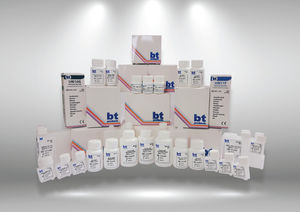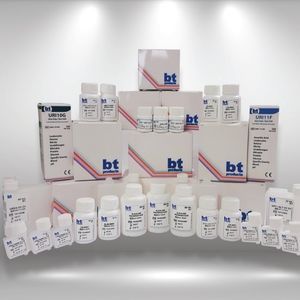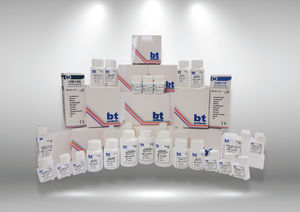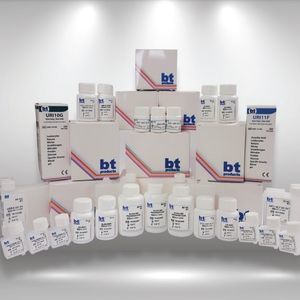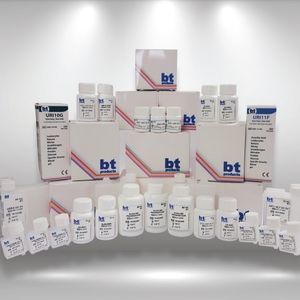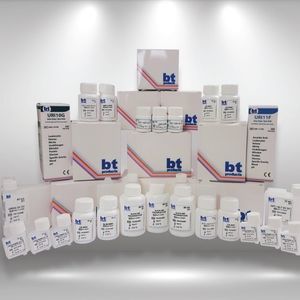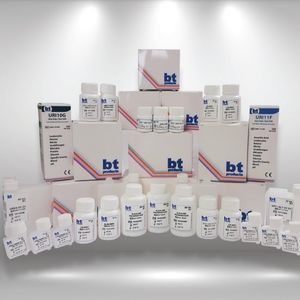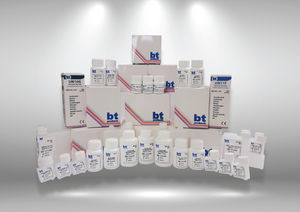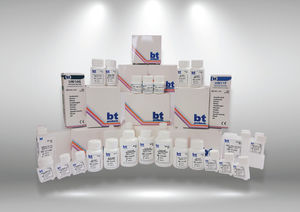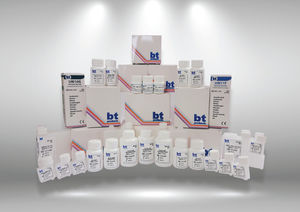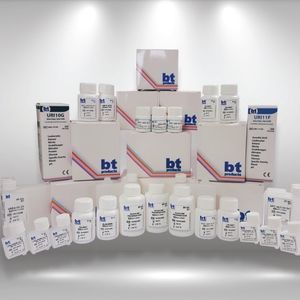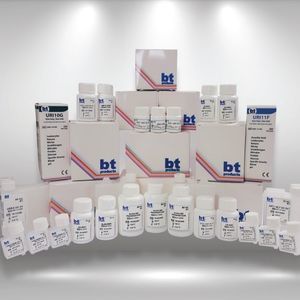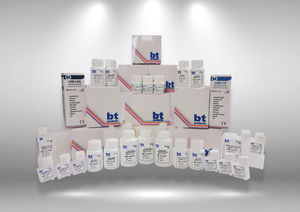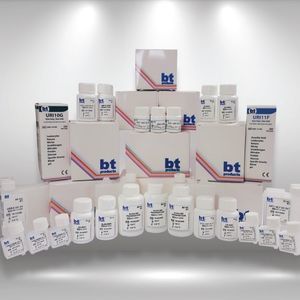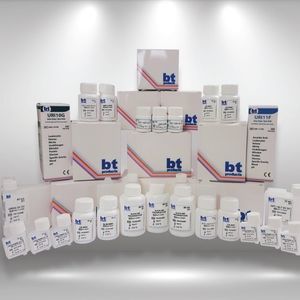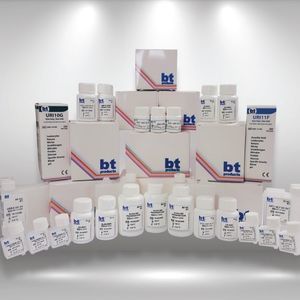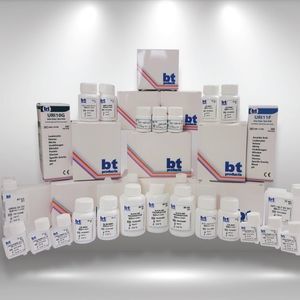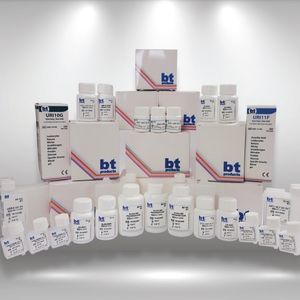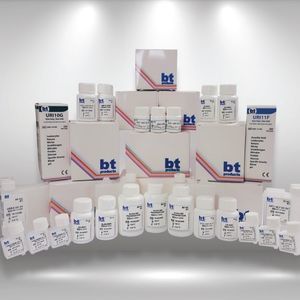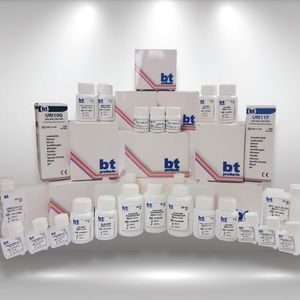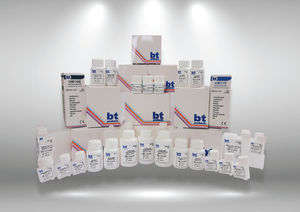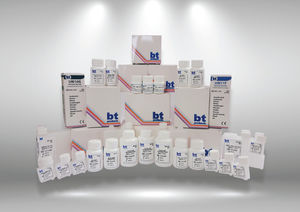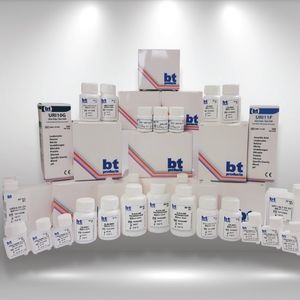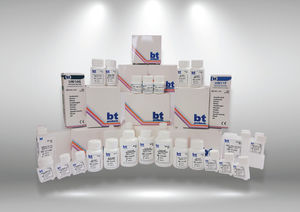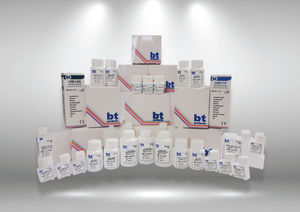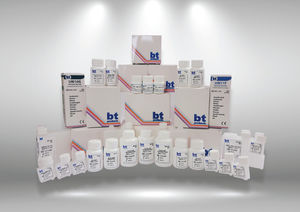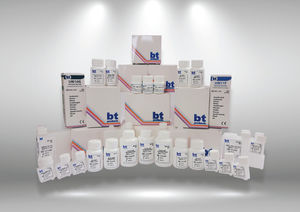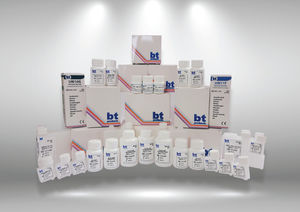
- Laboratory
- Laboratory medicine
- Solution reagent
- BILIMSEL TIBBI ÜRÜNLER
Total proteins reagent kit PRO-10 seriessolutiondiagnosticclinical
Add to favorites
Compare this product
Characteristics
- Type
- solution
- Applications
- diagnostic, clinical, for biochemistry
- Tested parameter
- total proteins, sodium, potassium
- Storage temperature
Min.: 2 °C
(36 °F)Max.: 25 °C
(77 °F)
Description
For the in vitro quantitative determination of total protein concentration in serum.
METHODOLOGY
The color reaction of protein molecules with cupric ions, known as the Biuret color reaction, has been known since 1878. Since the Riegler publicatlons of 1914, several attempts have been made to stabilize the cupric ions in the alkali reagent. Kingsley, modified the procedure In 1939 and 1942 to include the use of sodium potassium tartrate as a complexing agent. This procedure was later modified by Weichselbaum and Gornall. The present method Is based on these modifications
PRECAUTIONS
1. This reagent is for in vitro diagnostic use only.
2. Avoid ingestion. DO NOT PIPETTE BY MOUTH. In case of ingestion drink large amounts of water and seek medical attention quickly.
3. Avoid contact with skin and eyes. The reagent contains sodium hydroxide which is corrosive. In case of contact with skin, flush with water. For eyes, seek medical attention.
Reagent contains Sodium hydroxide . R34 Causes burns Wear suitable protective clothing, gloves and eye/face protection. In case of accident or if you feel unwell seek medical advice immediately (show the label where possible).
ADDITIONAL EQUIPMENT REQUIRED BUT NOT PROVIDED:
1. A clinical chemistry analyzer capable maintaining constant temperature (37°C), and measuring absorbance at 540nm.
2. Iron-free deionized water and related equipment, e.g.: pipettes
3. Analyzer specific consumables, e.g.: sample and read cups 4. Control and calibrator materials
PROCEDURE
Wavelength : 540 nm
Working temperature : 37°C
Optical path : 1 cm
Assay type : Endpoint
Direction : Increasing
Catalogs
No catalogs are available for this product.
See all of BILIMSEL TIBBI ÜRÜNLER‘s catalogsOther BILIMSEL TIBBI ÜRÜNLER products
Universal Bottled Clinical Chemistry Reagents
Related Searches
- Solution reagent kit
- Protein reagent kit
- Diagnostic reagent kit
- Laboratory reagent kit
- Enzyme reagent kit
- Histology reagent kit
- Dye reagent
- Antibody
- Buffer solution reagent kit
- Clinical chemistry reagent
- Quality control reagent kit
- Clinical chemistry analyzer
- Virus reagent kit
- Clinical reagent kit
- Automatic clinical chemistry analyzer
- Test strip
- Benchtop clinical chemistry analyzer
- Tissue reagent kit
- Electrolyte reagent kit
- Colorimetric reagent kit
*Prices are pre-tax. They exclude delivery charges and customs duties and do not include additional charges for installation or activation options. Prices are indicative only and may vary by country, with changes to the cost of raw materials and exchange rates.



